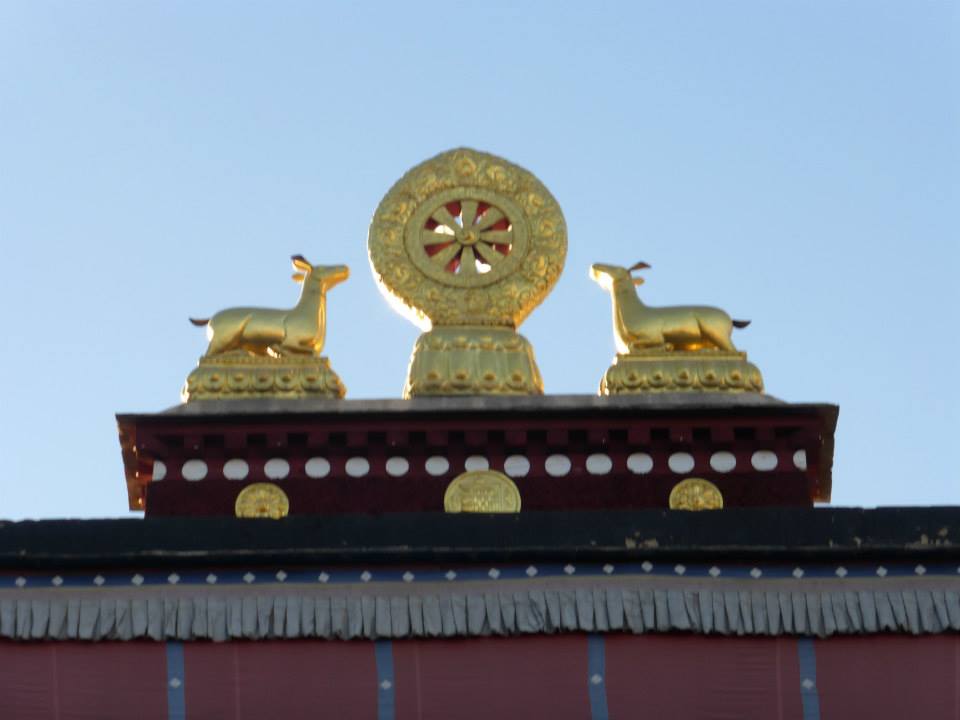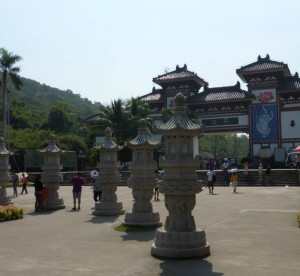
Living in China and visiting Tibet (Chris will be posting about that soon), we saw many beautiful Buddhist temples with monks in their orange robes carrying out daily duties of scroll and temple maintenance, religious ceremony and meditations, and visitor relations. Viewing the various relics and traditions, you come to realize how complex and ingrained in the Chinese culture the religion is. Buddhism, with its several branches, can be witnessed throughout Chinese society as the largest religious affiliation in the country, covering about 16 percent of the adult population.
Who was Buddha?
The name Buddha literally translates in Sanskrit to “awakened” or “enlightened one.” It generally means the first awakened person in an era. In Buddhism, the Supreme Buddha, or first awakened being of our time, is attributed to Siddhartha Gautama, an Indian scholar. Historians document his life somewhere between the 6th and 4th centuries BC.
There are accounts of his coming to Earth through a virgin birth as an already- perfect being (sound familiar? Yep, another tradition that stretches across all religions). More realistically, Gautama was born to ancient Indian royal parents in what is believed to be present-day Nepal.
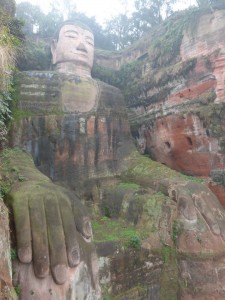
After living the royal life style for almost three decades, popular belief dictates Gautama escaped from the palace in his late 20s to witness the elderly, sick and dying people of his kingdom for the first time. Moved by this display of human suffering, he began a life forsaking all worldly pleasures and committing to a strict regiment of meditation and Yoga to find enlightenment through travel and study.
No doubt you can recall a story about the Supreme Buddha sitting under the Boddhi Tree meditating for 49 days until he found enlightenment. This came during what is believed to be Gautama’s mid-30s after almost dying of starvation from his austere lifestyle. After his brush with death, the Buddha declared living in either extreme was not the right path and began practicing the Middle Way.
After his awakening, the Buddha spent the rest of his life traveling and spreading the teachings of what his enlightenment had brought him. As he traveled, he acquired many followers, the first of many Buddhist monks and nuns. He passed down his teachings orally until the first Buddhists scrolls appeared almost 400 years after his death at around 80 years old.
What is Buddhism?
Buddhism is a religious path toward enlightenment. As previously stated, there are several branches of the religion. The three main traditions, Theravada, Mahayana and Vajrayana, are further broken down into sub-branches of the religion. Though the traditions vary in beliefs, common concepts exist in all three.
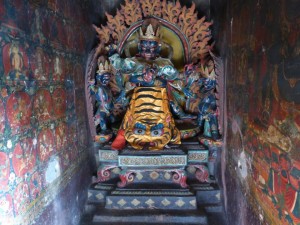
First, reverence is paid in a god-like fashion to the Buddha. In every Buddhist temple, you will find many forms of the Buddha represented in various statues. In Tibet, the red Buddha represents wisdom whereas the gold Buddha provides protection. My personal favorite, the black evil-faced creatures are the four protectors, based on an agrarian concept representing wind, snow, rain and sun. In China, there is the reclining Buddha and Laughing Buddha. Other forms of the Buddha symbolize the past, present and future. Worshipers light incense and bow three times to the statues, asking for good fortune or wisdom.
Next, all traditions practice the Middle Way, the Four Noble Truths and the Noble Eightfold Path. The Four Noble Truths address the main concept in Buddhism: suffering or dukka. Buddhists believe to end suffering, you must find content in what you are, what you already have, by giving up and relinquishing control. Once you are able to reach this stage, you free your mind, body and soul from all Earthly boundaries. Discovering the Truths of (1) dukkha, (2) the origin of dukkah, (3) the cessation of dukkha, and (4) the path leading to the cessation of dukkha all help you reach that level.
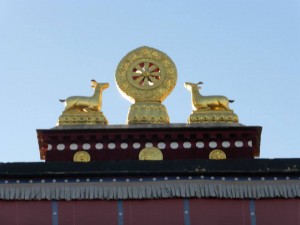
The Noble Eightfold Path is the way to end suffering and enter Nirvana, the highest attainment in the religion. To follow the Path, one must obtain the right (1) view, (2) aspiration, (3) speech, (4) action, (5) livelihood, (6) effort, (7) mindfulness and (8) concentration.
The Path is often represented in the Wheel of Dharma, a concept of a cosmic law and order. In the Wheel, there are six stages of the Buddhist life through reincarnation and karma. The first and lowest stage is equivalent to a idealistic hell, souls in continuous strife and struggle. The next stage is a step above hell. Creatures with thin necks and big bellies preside here, always hungry but can never get enough to eat. The third stage is a place of animals where they suffer because they can’t communicate with humans. The fourth stage is a war of fighting spirits. Next are humans who suffer trying to find enlightenment. The sixth and final stage is a dimension of super beings (think angles). Outside of the Wheel, you find Buddha and other beings who have reached enlightenment.
Finally, all the traditions believe anyone is capable of reaching enlightenment. This special place of boundlessness is not only reserved for Buddhas and their direct disciples, but anyone willing to follow the teachings and practice the lifestyle of Buddha can attain awakening.
Buddhism in China
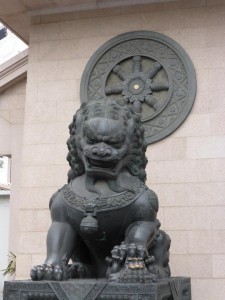
Buddhism found its way to China from India around the 1st or 2nd Century during the Han Dynasty. By way of the Silk Road, believers entered Mongolia and began to develop Buddhist schools throughout the land. As it was culturally assimilated to the native society, Chinese Buddhism mixed in quite a bit of Taoism/Daoism beliefs to help make it understandable for the locals.
The traditions of Mahayana and Vajrayana are the most practiced in China, though even these have been adapted to fit the Chinese culture. In the Mahayana tradition, believers strive to reach enlightenment for the sake of all beings. This tradition has scriptures dating all the way back to the 1st Century BC that instruct followers in the belief of supernatural beings who embody the excellence of the Buddha. The Vajrayana traditions is mainly found in Tibet, but there are also followers on the mainland. A tantric form of Buddhism, this tradition believes some teachings can only pass from teacher to student through empowerment and not from literature.
During the Cultural Revolution, many temples and ancient relics were destroyed, and monks that defied the government were either murdered or mysteriously went missing. Though the Communist Party has relaxed its rules on religion in the country since Mao Zedong’s death in 1976, Buddhism continues to operate under government control. The Buddhism Association of China, though it offers educational resources, keeps monks and other temple leaders in check.
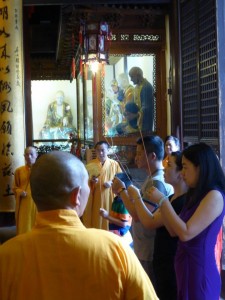
A resurgence in the religion has recently taken place as the Chinese government invests in the reconstruction and upkeep of temples. Though originally economic ventures in making the temples tourist attractions drove these investments, the local governments are now urging temples to return to their religions meanings as over commercialization is spreading rapidly in the country.
Your thoughts on Buddhism?
Buddhism is the fourth largest religion in the world today with estimates between 350 to 550 million practitioners globally. What do you think of Buddhism? What would you like to learn more about?
-Monica

